November 2018 October 2018 >>
Blog of Jack and Jude
explorers, authors, photographers & videographers
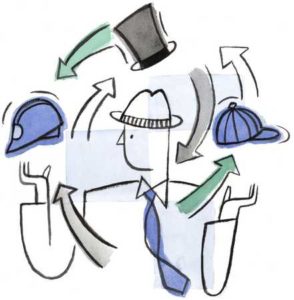 Changing Hats Once Again
Changing Hats Once Again
Strong, gusty westerly winds have brought clouds of dust that are obscuring the last light of day on this last day in our shack, and it’s turned the usual stunning view of farmland and waterway into a yellow stained view of dying, the sunset will be a glorious struggle. Tomorrow, in one day, flying two hops, we’ll lose the dust and heat, departing in 33°C and going up, arriving in Hobart with a mild 14°C and falling.
Missed dearly, only once more then gone in the mere whisk of time will be our luxurious rainwater shower heated by the sun,which pours out a huge Hi-Flo nozzle into a metre square cubicle. OMG ! The shower floor on our floating home tapers to hardly a few fingers at the forward end – and down in Tasmania we only get hot water after we’ve run the engine, or when alongside, which is a fairly rare event. It’s nothing like the leisurely deluge we are leaving behind. Oh, and there’s another sad note. The Chipmunk will be left behind too. That means no transport – except for a bright red tinny with two oars and a Green Machine that can go to a lot of places!
And we’ll still be connected to the World Wide Web but with gaps when we’re sailing somewhere, and so we can take you along with us if you like. But there will never be TV. – NO TIS G-O-N-E! We think that might be a blessing, something of a purification like a stay in a Tibetan seminary. A good time to let the brain regurgitate past events and look to the future.
There’ll also be more reading, aloud at times, more creative things, along with a fair bit more gazing at the larger world and wondering. You know, we’re not getting any younger, and with so much life’s experience bundled up inside us we’re wondering about the direction of mankind just like half the world is doing.
If this year’s voyage comes off as we think, it’ll bring even greater joy than our 50th honeymoon when we slept surrounded by the natural world 17 of the 20 nights. Ah, next week, we’ll be living in the wild in style, aboard the good ship Banyandah.
More show and tell then, Aloha, Ciao, and Cheers
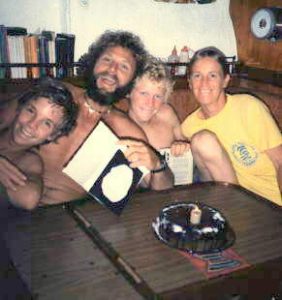
I’m wearing my butterfly necklace made with two Tiger Shark teeth.
When we were young and sailing vast oceans with our little ones, I’d read aloud to them around meal prep times. My story times bonded us even more tightly by taking us on a journey within a journey, with new adventures filled with insights into how things could be. Well, during our journey to the south of the state Jude and I had a taste of story time again.
We’ve returned, and with great appreciation, returned safely from our Golden Honeymoon extravaganza, and let it be further known that it went swimmingly, lovely, amazingly interesting, and lusciously romantic. The Yarrangobilly Caves is where we secluded ourselves within the sumptuous Lyrebird chalet that is surrounded by forests that we explored in the very real sense the awesome magic of multimillion year old formations created by Nature. And we were very moved by the most delicate crystal connections, transparent in ceiling to floor straws. Nor had we ever witnessed such huge caverns coated with crystals. Truly awesome. It proved a perfect destination.
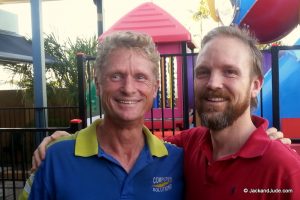
Here’s a photo from the other night, compare it the photo of our sons taken when they were 11 and 12. Still mates, going well.

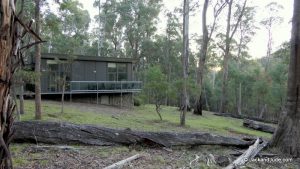
Our little Chimpmuck Suzuki, named for the CM front and back, travelled many kilometres during our three weeks on the prowl, taking the smaller roads, some gravel, some rocky, with plenty of 4WD fording rivers and creeks to take our Red Looney right to the water’s edge, for many enjoyable paddles. What a lucky purchase, a hardly used double kayak that slips silently across waters. To be afloat was core to our time away, silently drifting or playing hard to stay fit.
Dunns Swamp near Mudgee is one of many that proved an outstanding camp and paddle
It was so nice at Dunns, we stopped again on our way back from the Snowys, and enjoyed another paddle between those abrupt sandstone walls, forests and reed beds alive with birds aplenty. Watch the footage. It’s a heavenly spot! And it was especially nice to see that the little ones are getting a chance to witness the same through school programs, so we observed.
Going south and our return crossed varied lands, some dry dusty and sad in drought. Not till reaching the Snowy Mountains did the greens and trees return, except for the standing dead, white ghosts from the 2003 scorching fire reminding us that another such event will alter Earth forever.
On the long stretches of road, or just tolling along a by-road, I’d read aloud to my lady of fifty plus years,
Using our handy dandy Ipad Mini2, both guide and Kindle as we drive, and home theater at night hanging up in the tent, it also flies the drone. A very nice piece of kit.
Tarzan, Trazana, and the state of the planet.
 By chance, we obtained a copy of John Carter and the name being meaningless, we were astounded by the story as the film became a favourite of ours and played over and again for a feel good feeling. So entranced were we that I read the original book to Judith around the fire while on a wilderness trek. Written by Edgar Rice Burroughs, it was originally published one hundred years ago. A bit before my time on Earth.
By chance, we obtained a copy of John Carter and the name being meaningless, we were astounded by the story as the film became a favourite of ours and played over and again for a feel good feeling. So entranced were we that I read the original book to Judith around the fire while on a wilderness trek. Written by Edgar Rice Burroughs, it was originally published one hundred years ago. A bit before my time on Earth.
The most influential writer in the entire history of the world
Ray Bradbury, author best known for his novels ‘Fahrenheit 451,’ ‘The Illustrated Man’ and ‘The Martian Chronicles.’ once said, “Edgar Rice Burroughs never would have looked upon himself as a social mover and shaker with social obligations. But as it turns out – and I love to say it because it upsets everyone terribly – Burroughs is probably the most influential writer in the entire history of the world. By giving romance and adventure to a whole generation of boys, Burroughs caused them to go out and decide to become special.”
 I was in that generation of boys and I was one of many who decided to become special. To thank the man for the wisdom of his thoughts, while on our special journey celebrating so much, we took with us Edgar Rice Burrough’s second great story, Tarzan of the Apes. Not quite knowing what to expect.
I was in that generation of boys and I was one of many who decided to become special. To thank the man for the wisdom of his thoughts, while on our special journey celebrating so much, we took with us Edgar Rice Burrough’s second great story, Tarzan of the Apes. Not quite knowing what to expect.
During my early teens riding a bicycle around Los Angeles’s fast expanding tract house estates in the Valley, our small community of Pacoima became famous after a four engine aircraft ploughed straight into the school I attended. While not far away was Tarzana, a housing estate built around the great Tarzana Ranch owned by Edgar Rice Burroughs, in his mature years and still pumping out pulp fiction dreams. He was immensely prolific.
Burroughs wrote nearly 80 books, including 26 Tarzan stories. Once he got in the groove of his profession, Burroughs shunned rough drafts and rejected any excuse to take time off from writing. As a result, he wrote around 10-12 pages per day in his prime, and even kept track of how much he wrote per year. (1913 was his most active, having penned a staggering 413,000 words.) He recycled his basic plots, and his books sold around 30 million copies in his lifetime. He described his philosophy of quantity best himself: “If you write one story, it may be bad; if you write a hundred, you have the odds in your favor.”
Not far from my teenage house, which was brand new, built along with hundreds of others on what had been orange groves, a dusty road leads off into Kagel Canyon where giant eucalyptus trees abound with wild cougars in my mind and where poisonous snakes threatened a brave lad on a push bike.
I came across this quote from Burroughs and liked him all the more for his genteel view of life, “In all these years I have not learned one single rule for writing fiction. I still write as I did 30 years ago; stories which I feel would entertain me and give me mental relaxation, knowing that there are millions of people just like me who will like the same things I like. Anyway, I have great fun with my imaginings, and I can appreciate–in a small way–the swell time God had in creating the Universe.”
Like Edgar Rice Burroughs, Jack and Jude have great fun on journeys inspire by his words and by doing so can also see the swell time God had in creating the Universe. Maybe he also thought human kind were following a dream taking us away from a destiny of living in harmony with the creation.
“Hundreds of thousands of years ago our ancestors of the dim and distant past faced the same problems which we must face, ……. What they did may we not do? And even better, for are we not armed with ages of superior knowledge, and have we not the means of protection, defense, and sustenance which science has given us. To follow Mr Burroughs advice we should collectively direct our future to a cleaner, greener, less polluting future with much greater focus on Nature.
DESTINATION
Flinders Island Walkabout
Hi, I’ve been wanting to highlight this image found recently in our collection, It’s a sign, compliments of jj’s on the bay, showing walks that we photographed at Killicrankie Bay in 2013. It has now been added to the nice bit of fun we had walking and hitching around Flinders Island. All aboard, the weather was sublime.
Written March 2013

As we stood around the BBQ plate overlooking Killicrankie Bay to the wider Bass Strait, one of the four who had just earlier kayaked across Bass Strait posed the question of why do we do it..
Looking up his tall frame I chirped in, “Friendship Is Why We Travel.” A wink and a nod, “It’s a chapter in a book I wrote about ‘Where Wild Winds Blow.’ I can send you a copy. It’s in electronic format now.”
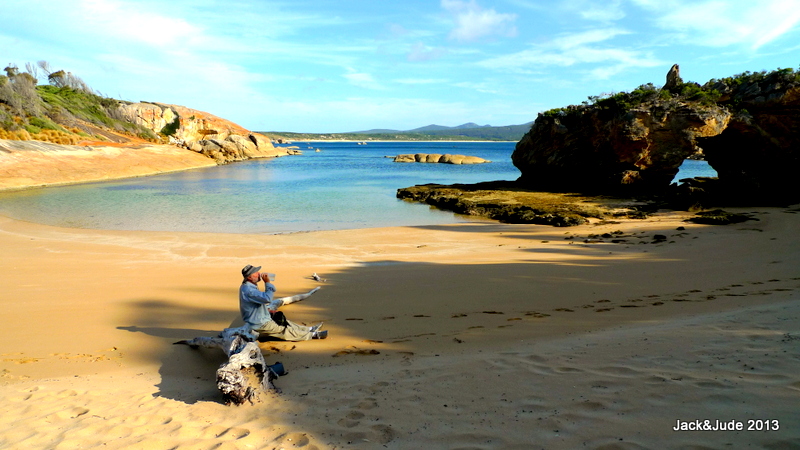 Just those few words started a lively discussion within the group camping on Killiecrankie Bay, the kayakers who’d just paddled across Bass Strait, a father and son bicycling around Flinders Island and Jack and Jude, lugging sacks and hitchiking or walking.
Just those few words started a lively discussion within the group camping on Killiecrankie Bay, the kayakers who’d just paddled across Bass Strait, a father and son bicycling around Flinders Island and Jack and Jude, lugging sacks and hitchiking or walking.
One in the group suggested we travel for the magnificent scenery seen at times. Another said the freedom of an amazingly clear sky punctuated by a single golden orb. Or is it the people? Or the whole enchilada – the collage that is Earth, providing wonder, adventure, and entertainment, revealing mysteries beyond wisdom.
We all agreed that by engaging with Earth, knowledge is gained by simply observing life, and that the pleasures of being close to Mother Earth lets us put up with the downside of being an explorer. The uncertainty and discomfort, dedication and hard work.
We had been to Flinders Island once before and our experience that time had been quite different. Stormy weather, sleepless nights, dragging anchor, rocks astern. This time we lashed Banyandah to a stout mooring provided by Garth, Lady Barron’s helpful Harbour Master, then under a quiet azure sky we chucked our loaded rucksacks into Little Red and rowed ashore seeking new adventures.
Breathing heavily along Lady Barron’s Esplanade, the weight of our sacks were soon bushwhacked by the lovely blue channels of Franklin Sound serenely dotted with blanched granite islands showing splashes of red lichen. All was silent. Not a soul in sight. No life until reaching the four corners and finding the road out of town encumbered with sedans and 4WDs parked next to the Memorial Hall somewhat haphazardly..
We knew what was up. A display of maritime memorabilia began that Saturday morning and the previous day when they were just setting up I promised them a DVD of our Australian Circumnavigation to play on their screens.
Our floating home was now gone from sight, and gone from our thoughts. We had secured our lady best we could, closed every seacock, shut down the electrical systems, packed the fridge with containers of water before running it down to near freezing, dead spaces filled with towels. This routine saves our veggies and dairy products for a number of days; we keep nothing frozen so can go away anytime we please.
Maritime Display
Dumping our sacks against the grey concrete venue, a hearty, “Could you give us a hand,” greeted our arrival. Besieged by morning breeze, a rotund fellow attempted to sizzle sausages and in no time we swapped round his BBQ and tables, all the time chatting six a minute.
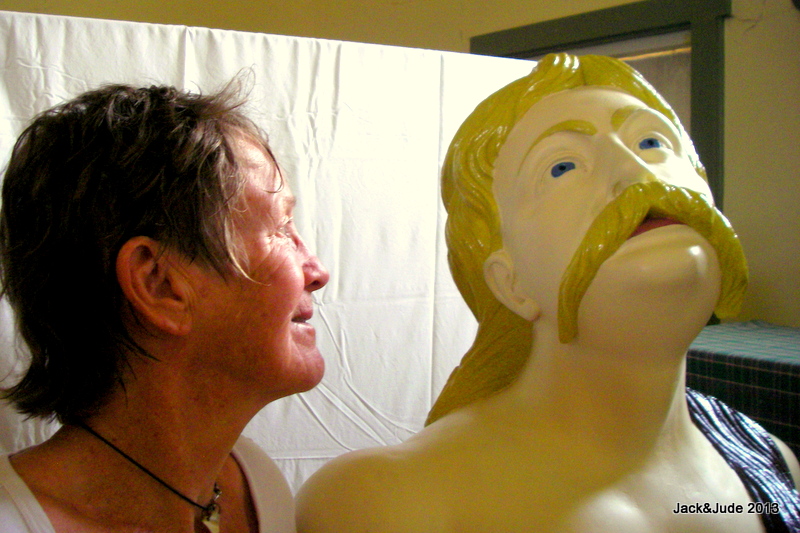 Inside the hall, a major transformation had taken place since being empty the day before when we’d helped shift the central showpiece; the figurehead taken off the Norwegian Barque Farsund that had run aground on Vansittart Shoals in 1912. This morning the walls were adorned with 240 years of maritime history. This is a locally produced display of memorabilia that has been passed on through generations, just as the ships and tenders had served several generations. Although the vessels are now mostly gone, the families still gather to talk about the ‘good old days.’ Down the centre of the hall, lines of tables displayed more articles from the past; logbooks, family albums, certificates, a few portholes and other bits. Gathered in groups, locals were reminiscing. “When my dad first got Eloise she had a temperamental Petter Diesel…” I heard this just as a burly fellow with runny eyes tugged my sleeve over to a wall mounted Black and White.
Inside the hall, a major transformation had taken place since being empty the day before when we’d helped shift the central showpiece; the figurehead taken off the Norwegian Barque Farsund that had run aground on Vansittart Shoals in 1912. This morning the walls were adorned with 240 years of maritime history. This is a locally produced display of memorabilia that has been passed on through generations, just as the ships and tenders had served several generations. Although the vessels are now mostly gone, the families still gather to talk about the ‘good old days.’ Down the centre of the hall, lines of tables displayed more articles from the past; logbooks, family albums, certificates, a few portholes and other bits. Gathered in groups, locals were reminiscing. “When my dad first got Eloise she had a temperamental Petter Diesel…” I heard this just as a burly fellow with runny eyes tugged my sleeve over to a wall mounted Black and White.
“See that clinker,” he said reverently pointing to what looked a squat open tub. “She’d carry two ton through any sea.” Then we heard how his grandfather had felled the trees that planked her at Sawyers Bay in 1883.
Jude loves to digi-document everything, calling it her visual diary gathered here, there, and everywhere. And I surely don’t mind buying another massive hard drive as all that data proves helpful as our grey matter ages.
But, what our eyes told us that morning was the harsh, demanding pioneering life in this remote location had bound the Straitsmen tightly like strands of strong rope. They enjoy a joke to ease their load, love a laugh, a slap on the back, and can knock back a few cold ones because life is hard living on the edge of Bass Strait.
Furneaux Museum
Our time that first day was to be divided between two displays. Up island lay the Furneaux Museum, reported to be extremely comprehensive. Run by volunteers it is open afternoons only, so at 11 am we bid adieu to our hosts, lifted our loads, and headed for the road.
Jude and I have hitched rides since we first met back in the 60s. In fact, the day we met we set a challenge; who could reach Paris first by thumbing lifts. Why bother, you might wonder? Renting a car has to be easier. That may be, but we like to meet the locals, one on one, in their environment. Doesn’t matter if it’s inside a dusty ol’ ute, or inside the plush interior of a Fairmont carrying a father and son, like our very first car that morning.
Robin, a fifth generation Flinders Islander had retired a couple of years back after serving the community as Works Manager. His son Peter now lives in Brisbane and misses the island. His father misses his son, so together they got a boat, and once a year during Peter’s holidays, go out fishing every day they can. Would we like to see the boat? How about a sandwich for lunch?
Robin and Peter made sure we arrived at the museum just as Kat, volunteer that day, opened the door at 1 pm sharp. $4 entry – what a bargain. Being her first customers we stood at the counter a good half hour discussing island history – a very rich history indeed.
Island History
 Uninhabited in 1773 when Tobias Furneaux first spied them after losing his way from our esteemed Captain Cook, these many islands abounded with resources much in demand. Seals lazed on their shores, whales cruised nearby, and millions of mutton-birds nested in burrows year after year. Hungry men arrived soon after Matthew Flinders told the world that riches lay waiting. That was 1797. Sealers were the first to come. In fact Kent Bay on Cape Barren Island was the second settlement in Australia. The sealers took dark woman from the Tasmanian mainland to do their bidding. After all the seals were taken, mutton birding became the next target of greedy man. We pretty much decimated them too, and then turned to the seas for fish, crays, and of course the harmless, slow moving abalone that commands such a high price. Men built boats from Flinders Island forests. They chopped down more to keep the winter chill out their bones, cleared even more for farming and livestock. There’s hardly any endemic trees left on the island. A pine plantation planted in the north is struggling financially. Transportation costs eat up the profit. And so between the two mountain ranges is mostly weeds and yellow grass, interspersed with scratchy, impenetrable tea-tree. Hardly good for nothing in the current drought.
Uninhabited in 1773 when Tobias Furneaux first spied them after losing his way from our esteemed Captain Cook, these many islands abounded with resources much in demand. Seals lazed on their shores, whales cruised nearby, and millions of mutton-birds nested in burrows year after year. Hungry men arrived soon after Matthew Flinders told the world that riches lay waiting. That was 1797. Sealers were the first to come. In fact Kent Bay on Cape Barren Island was the second settlement in Australia. The sealers took dark woman from the Tasmanian mainland to do their bidding. After all the seals were taken, mutton birding became the next target of greedy man. We pretty much decimated them too, and then turned to the seas for fish, crays, and of course the harmless, slow moving abalone that commands such a high price. Men built boats from Flinders Island forests. They chopped down more to keep the winter chill out their bones, cleared even more for farming and livestock. There’s hardly any endemic trees left on the island. A pine plantation planted in the north is struggling financially. Transportation costs eat up the profit. And so between the two mountain ranges is mostly weeds and yellow grass, interspersed with scratchy, impenetrable tea-tree. Hardly good for nothing in the current drought.
Spending all afternoon witnessing Furneaux memorabilia was another lifetime experience. We learned heaps. Several times we left the buildings, there are five of them, each an original from an era transported to that site, to sit in the shade of a casuarina, sip water and digest what we had seen, which included the anchor from the Sydney Cove making our previous visit to Rum Island more complete.
 At 5 pm closing, Kat suggested we wander down to Emita Beach. “There’s a pretty spot with a picnic table and perfect campsite.”
At 5 pm closing, Kat suggested we wander down to Emita Beach. “There’s a pretty spot with a picnic table and perfect campsite.”
So after refilling our water containers we took her advice and found heaven. On a point overlooking the blue expanse of Marshall Bay we pitched our tent, and then with tin mugs full of port, wandered the sand sometimes casting a squid jig to try our luck. We had it all to ourselves until five Victorians arrived to fish off the beach.
Black Man’s Houses
Next morning we meandered down a dusty road to Wybalenna, past plenty of road kill, white bones and death, to another tragic site at Black Man’s Houses. There in 1834, on an expansive open plain the British had tried to halt the annihilation of Tasmania’s Aborigines by shifting the last 135 off mainland Tasmania to be resettled on Flinders Island, where as George Augustus Robinson said, they would be ‘civilised and Christianized.’ Forbidden to practise their old ways they were homesick for their lost country and many died from white man’s diet, beliefs, diseases, and despair.
In October 1847, the 47 survivors were transferred to Oyster Cove, near Hobart in springtime. But even the warmer weather did not hide the fact that their houses were little better than slab huts in poor repair, built in a cold, damp, depressing place.
Killiecrankie
Hitching a ride, a young rancher stopped and admitted he only lived a minute up the track, but took us all the way to the scenically magnificent Killiecrankie, where we met our group of modern day explorers and swapped stories and celebrated life.
On our fourth day, a tiny grit of granite in Jude’s eye and slightly larger ones in our tent were the only distraction from the world’s most perfect campsite, found after walking around the bay to be directly under Mount Killiecrankie.
Behind us rose smooth rock monoliths that seemed to bestow great power while before us spread a blue so tranquil our bodies went limp as our eyes feasted on the parade of buff granite, dazzling white sand, vibrant scrub greens mixed by Nature’s deft hand to form a perfect setting for an ashram. You may think this hyperbole, but come to Killiecrankie on a fine autumn day and judge for yourself. So still and warm was the day, we stripped naked and floated free in transparent water, then giggling like children, raced the other back to our tent. Surrounded by unaltered Nature, we lay with views out both sides and let our minds wander over our walkabout, wondering how life had become so mucked up. Man’s greed and ineptitude have always walked alongside our brilliance and determination. And we have always nibbled around the edges of Nature like a cancer. But like a cancer, it is our rapidly increasing numbers that are creating big problems.
Adapt, Migrate, or Die
THE GLOBAL OCEAN is warming, that’s a fact. But the Tasman Sea, east of Australia, has been identified as one of five global ocean hotspots.
“Warming in the Tasman Sea has been particularly rapid,” says Professor Matthew England, director of the University of New South Wales Climate Change Research Centre.
Temperatures there have risen by 2º C over the past 60 years – three times the average rate of warming in the world’s oceans. The warming has been triggered by strengthening wind systems – a result of climate change – which have driven warm ocean currents toward the poles, beyond their known boundaries.
“We are seeing a lot of sea urchins migrating south from NSW to Tasmanian water,” says Dr Wenju Cai, a marine and atmospheric scientist with the CSIRO in Melbourne. “There they eat out all the Tasmanian kelp. Because kelp forests provide food and shelter to a huge variety of marine species, their destruction is having severe knock-on effects.”
Environmental Vandalism
On this voyage Jack and Jude saw no kelp forests in Fortescue Bay, or in any other bay where previously there had been thick growth. Changes are happening rapidly. So let’s remind ourselves that we do not inherit the Earth from our Ancestors – we borrow it from our Children. And understand that the Australian government’s carbon tax is mostly feel good window dressing. Australia is the world’s largest coal exporter. Here we dig up and sell coal to China and India, who are commissioning a new coal fired power plant every week. Coal plants are the most polluting of all power stations and the World Resources Institute (WRI) identified 1,200 coal plants in planning across 59 countries, with about three-quarters in China and India. Go figure.
“Where Wild Winds Blow” has just been published in electronic format. Immediate Download, cost of a coffee. Paypal

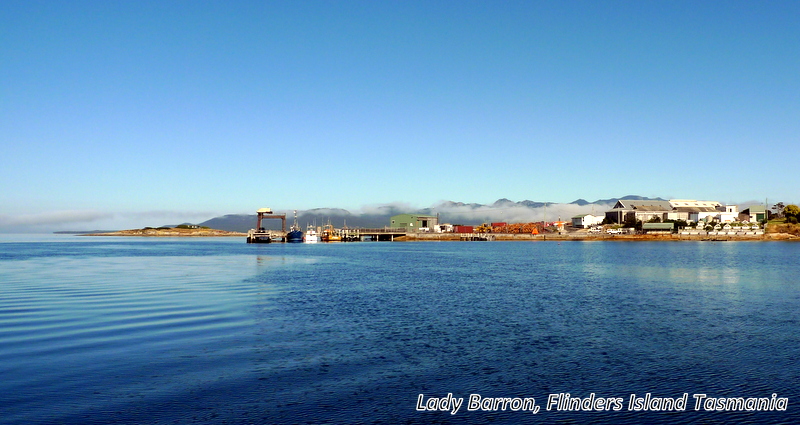


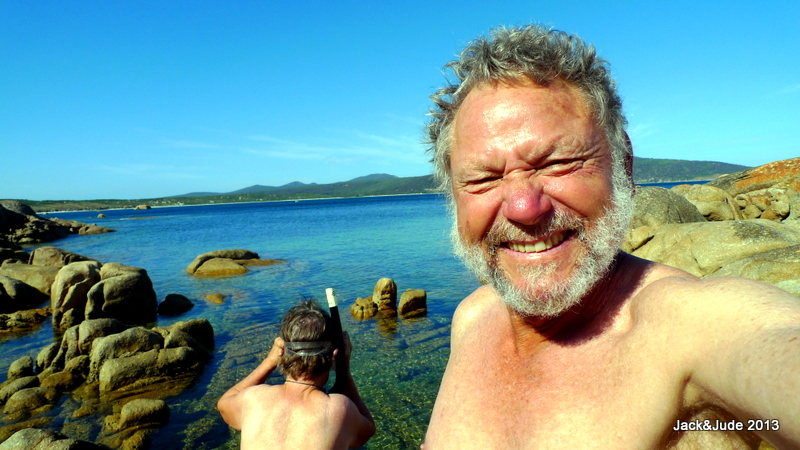
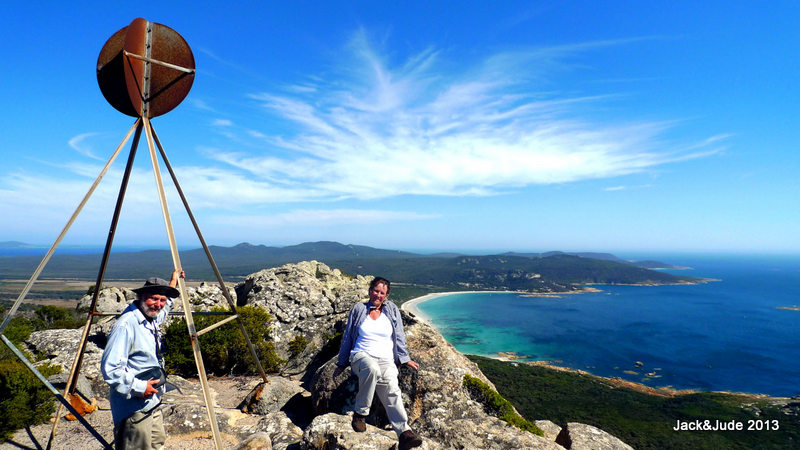





Congratulations you two wild adventurers…. Hope to see you in Tassie some time…. Port Huon – remember!
Thanks for your congrats, Robyn and Paul, hope to see you later this summer when we sail down the east coast. We’ll raise of our glasses in fond memory of dear Janelle….. Cheers guys